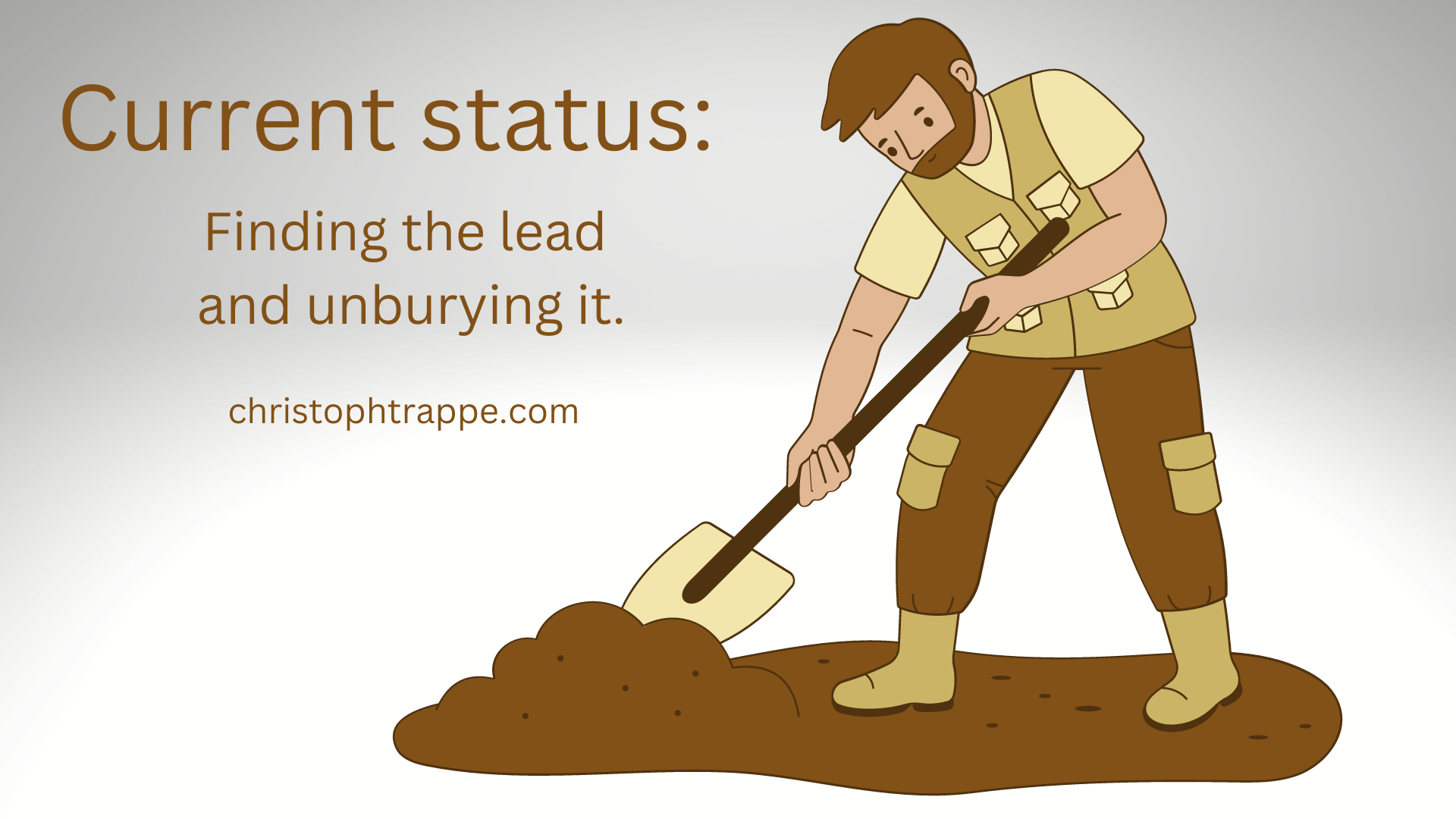Trappe Digital LLC may earn commissions from sponsored links and content. When you click and buy you also support us.
“Christoph, did you bury the lead in that story?” is certainly not something we want our editors to ask us. And some editors wouldn’t ask anyway. They would tell you. “Why the heck did you bury the lead in that story?”
And burying the lead (or lede – from the newspaper print days) can hamper a content asset’s effectiveness. In this article, I cover:
- What does it mean to bury the lead?
- Why is a good lead important?
- How come content creators bury the lead?
- Signs you buried the lead
- How to NOT bury the lead
What does it mean to bury the lead?
To bury the lead means our content, story, memo, or whatever isn’t getting to the point. This isn’t just a thing in journalism but can happen with public business storytelling and internal content.
You may have seen memos like this from corporate leaders:
We love you and the culture you have created here together. The product is humming along and we know it can make an impact in the industries that we serve. We know that based on the consumer feedback and impact we’ve already seen and see daily.
The roadmap looks great, too, and we are looking forward to building it.
Unfortunately, due to the current economic conditions we have to lay off a number of valued team members.
The lead here is that there are layoffs, and it’s buried. Unfortunately, writing – and even talking – like this isn’t uncommon. The most important information is buried in the content, and people must look for it.
[Tweet “Burying the lead can cause people to miss the main point.”]
Why is a good lead important?
A good lead in content transfers information easily and in the most efficient way. And who has the time to waste time trying to figure out what unclear content is trying to say? A good lead is essential in business storytelling because it might be the only thing people will read before abandoning the content if it’s not good.
Online consumers often skim content, including the subheadlines, other content types within the article, and the first sentence of the article. So that’s why the opening has to get to the point, be clear about what we are talking about, and be as engaging as possible.
With longer web content, we might even argue that each sub-section needs its own lead that must be able to pull people in.
Think of it this way: People skim the content – the headlines. If the headline is interesting, they might read the first sentence. They may keep reading. Or, they skip to the following headline and repeat that process. Or they might leave the site altogether. So a good lead has the job of keeping people engaged with the content for longer.
Read next: Why finding your content niche matters
Why do content creators bury the lead?
A variety of reasons come to mind:
- Not clear about what the actual lead should be.
- They are free writing and eventually get to the lead but didn’t cut or edit out the extraneous stuff.
- Negative news might feel better buried for the writer. If we butter this up here, the message may be better.
- Misplaced creativity. Sometimes, content can be dragged out unnecessarily in the need to be creative.
[Tweet “Be creative, but don’t let it hurt the content’s understandability.”]
How do you know if you buried the lead?
Sometimes, we do need an editor to help us with this part. Other times, we may need to step away from the article and let the content sit before coming back with fresher eyes.
How to NOT bury the lead
The easiest way, in my experience, is to tend to get to the point. Indeed, be creative, find the best words and tell a story that draws people in when it makes sense. But, a how-to-article doesn’t need to be the next great novel. It just needs to get the point across about how to do whatever you write about. And that includes having easy-to-digest content that helps the reader solve the problem they are trying to solve.
But, it also starts with the outline of the content. Are we clear about what the story is and how we are going to tell it? It’s hard and maybe impossible to write good opening sentences to any content if we are unclear about what the content should be about. So start there:
- Be clear about the purpose of the content
- Understand what the most important pieces are
- Determine how to share them in clear, direct, and creative

